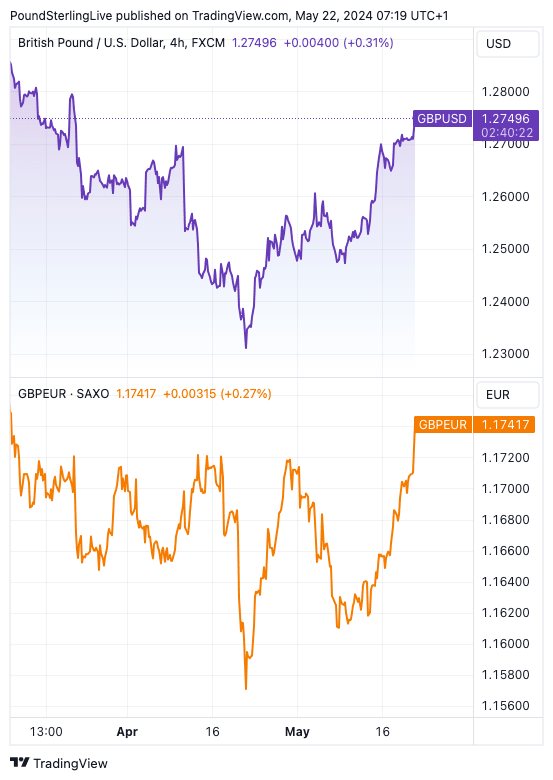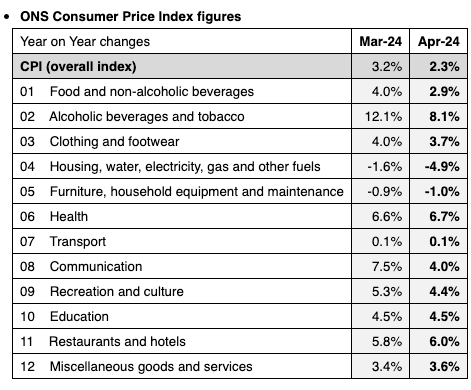
Image © Adobe Stock
The pound-euro exchange rate rose to its highest level since March at 1.1736 after UK inflation fell to 2.3% year-on-year in April, a figure that was higher than market and Bank of England expectations (2.1 %).
The most important and oft-watched component of services inflation in the release was significantly worse than expected at 5.9%, while the market and the Bank of England were expecting a reading of 5.5%.
The prospect of a rate cut at the Bank of England in June is now significantly lower than 50%, after being close to 60% just a few days earlier. The rise in the value of the pound reflects this adjustment in expectations for Bank of England policy.
The pound rose against all G10 peers after the announcement, with the pound to the dollar hitting 1.2745, its highest level since March 21. “The market reacted to the news. Sterling rose against the dollar to a high of $1.2759, from $1.2707, before retreating to $1.2735. Markets are now not fully pricing in until November, since the previous August,” says Gabriella Dickens, G7 economist at AXA Investment Managers.
Those who read the recent Pound Sterling Live article covering Andrew Sentance’s views warning of a reversal will be prepared for the possibility of a reversal. “My forecast for core and services inflation was mostly correct. I had forecast core inflation at 3.8% – the actual figure was 3.9%. My forecast for services was 6% versus 5.9% actual. Measures of core inflation have come in much higher than the market consensus,” Sentance said after the announcement.
The outcome, meanwhile, reduces the risk to the pound of a series of successive rate cuts over the summer. “Will the Central Bank cut in June or take advantage of the fact that inflation is slightly higher than expected and delay it until the August meeting? Movements in currency markets this morning suggest that a cut in August has become less likely,” said Nicholas Hyett, investment manager at Wealth Club.
“UK inflation of 2.3% is now below the G20 average – which it will be until the end of the summer – but the symbolism of it being above 2% will delay some tougher policy calls for cuts by a month or two,” said Simon French, economist at Panmure Gordon.

Above: GBP hit fresh multi-week highs against the dollar and euro. Track GBP/AUD with your own custom rate alerts. Place here
He explains that services inflation of 5.9% is the most consistent aspect of the report as it proves that non-tradable components are stickier than expected. “We’ll stick with August for the first rate cut – although another round of wage and price data comes before the June MPC,” says French.
“Today’s announcement was a bit of a blow to the BoE and the Prime Minister,” said Paul Dales, chief UK economist at Capital Economics. “While wages and CPI are still to be released before the BoE meeting on June 20, a cut now seems very unlikely. Even a cut in August looks a bit more in doubt.”
Looking at the details, it was the drop in household electricity bills in April that gave the most significant downward impulse to inflation. Falling food prices also had an impact. A drop in the inflation rate of clothing and footwear and alcoholic beverages is also noticeable.

Image courtesy of BRC.
As the chart above shows, service-oriented industries like restaurants and hotels continue to raise prices. This will reflect the high wage costs these industries face and highlights that inflation will only return to the 2.0% target on a sustainable basis if wages cool.